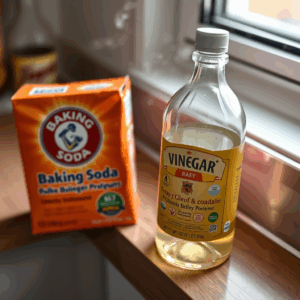Destructive health impacts are not only invisible through the clouds of smoke damage but also usually go unnoticed. After all, the toxic particles and chemicals emanating following a fire may settle in the air, on surfaces of your household, or even inside the fabric. Can you stay in a house with smoke damage? This becomes a vital question when you consider the risks these contaminants pose. The health consequences of smoke damage are much deeper than just triggering respiratory or allergic complaints and increasing the chances of more serious complications, such as heart disease, in the long term.
Smoke damage is more than just about staining walls or giving furniture an odor; it means pouring all kinds of harmful chemicals into living spaces, including volatile organic compounds (VOCs) and fine particulates that go directly into people’s lungs. Particularly at risk from such exposure are children, the elderly, and people with pre-existing health concerns, making it a potentially dangerous choice to live in smoke-damaged properties.
Is It Safe to Stay in a House with Smoke Damage? What You Need to Know
Whether or not you can safely remain in your home hinges on a few major factors. Here’s what to evaluate:
Air Quality
The air inside a smoke-damaged house often remains contaminated with microscopic soot particles and toxic gases. Even if the smell of smoke has faded, harmful emissions can persist in hidden areas. Testing your home’s air quality and using high-grade air purifiers can help address these concerns.
Structural Damage
Smoke can saturate areas that you don’t see, such as within drywall, attic spaces, and the HVAC system. Any of the structural components contaminated by soot or smoke will need professional cleaning service or replacement to avoid long-term exposure to the toxins.
Household Vulnerabilities
Young children, seniors, and those who have pre-existing respiratory problems or compromised immune systems are highly vulnerable to smoke damage. Even the slightest prolonged exposure indoors can hardly be advisable for these groups.
The Extent of Cleaning Efforts
If cleanup activities are in progress but have not been completed, it is best for you to avoid the premises temporarily. Only after complete restoration of the premises and an air quality report should you consider staying.
How to Address Smoke Damage for a Safer Home Environment
Restoring a smoke-damaged house involves more than scrubbing walls and airing out rooms. It requires a systematic approach to eliminate contaminants effectively.
Ventilation Is Key
Ventilation should be done as the first step in removing particulate smoke. Open windows and doors to enhance airflow. Additionally, purchase HEPA filters for your HVAC system or to be used with portable room air purifiers to trap ultra-fine particles.
Deep Clean Surfaces
While you can usually wipe walls, ceilings, and furniture-cleaning surfaces with normal means, smoke odor neutralization must use specialized cleansers. Smaller items may be treated with products like baking soda or vinegar, while commercial soot removers may be required for bigger jobs.

Don’t Overlook Soft Furnishings
Smoke particles cling to fabric materials like curtains, upholstery, and rugs. Send these items for professional cleaning, or use detergents designed for smoke removal.
Address Insulation and Ductwork
Soot and debris can make their way into your home by traveling through insulation and ductwork, causing contamination in the air circulation. If your HVAC system was operating during the fire, be sure to replace the filters and get the ducts cleaned by professional services.
Remove and Replace Damaged Materials
Porous materials such as drywall, carpeting, or ceiling tiles may need to be removed entirely. Soot particles can penetrate and remain trapped, making it impossible to clean them thoroughly.
Can Professional Restoration Help?
While DIY cleaning helps with surface-level damage, professional restoration services are often necessary to ensure your home is safe. Restoration specialists use advanced tools like
- Ozone Generators to neutralize odors.
- Thermal Foggers to penetrate hard-to-reach areas.
- Deep Extraction Equipment for carpets and upholstery.
Professionals also test for hidden toxins in the air or within structural components, ensuring nothing is left unsafe. Relying on their expertise takes the guesswork out of deciding if you can stay in a house with smoke damage.
Preventing Future Smoke Damage
Once your home is safe, take measures to minimize your risk of future smoke damage:
- Install High-Quality Air Filters: Upgrade your HVAC filters to ones designed to catch fine particles.
- Ensure Proper Ventilation: Make sure your home’s ventilation system is effective at filtering and circulating air.
- Regular Maintenance: Clean chimneys, inspect electrical systems, and address potential fire hazards.
- Seal Gaps: Reduce external smoke intrusion during wildfires by sealing doors and windows.
Smoke damage is not just for the looks; it is also actually a threat to safety itself. When in doubt, resort to professional certified inspectors and restoration specialists to ascertain that the premises are clear of toxins before moving back in. With the right measures and repairs, the house can again be made your safe haven.
Previous